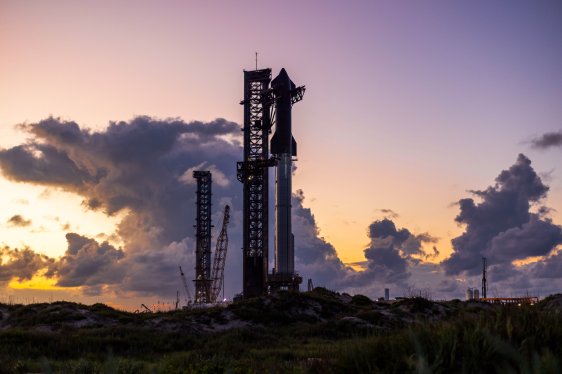SpaceX to Deploy Model Starlink Satellites on Next Starship Launch

In a significant move, SpaceX is stepping up its game with its Starship test flight program. The next launch is expected to showcase payload deployment for the first time, marking a crucial milestone in the company’s ambitious plans.
Payload Deployment: A Major Breakthrough
The payload in question will be 10 Starlink ‘simulators’ that are similar in size and weight to the next-gen satellites SpaceX plans to deploy using Starship. These model spacecraft will travel on the same trajectory as the upper stage, also known as Starship, and splash down in the Indian Ocean.
The Operational Version: V3 Satellites
The operational version of these satellites, called V3, is likely to be the first real payloads Starship flies. This development is critical to SpaceX’s plans to rapidly deploy its Starlink satellite constellation and reduce costs per satellite launched.
Why V3 Matters
SpaceX currently launches Starlink using its workhorse Falcon 9 rocket. However, the next-gen V3 satellites are expected to be much heavier than the current V2 Mini spacecraft. Thanks to Starship’s incredible payload capacity, SpaceX plans to deploy 60 V3 satellites per Starship launch, which will add 60 terabits per second of capacity to the Starlink network.
Payload Capacity Comparison
Per satellite, the V3 satellites offer more than 10 times the downlink and 24 times the uplink capacity compared to the V2 Mini satellites. This significant increase in capacity will enable SpaceX to expand its Starlink network at a faster pace.
Upgrades to the Rocket: A New Era for Starship
In a blog post ahead of the seventh test launch, expected later this month, SpaceX announced it is introducing a slew of upgrades to the rocket. These improvements include:
- Propulsion System: Enhancements to increase efficiency and reduce fuel consumption.
- Avionics: Upgrades to improve navigation, communication, and control systems.
- Heat Shield: Reinforced heat shield to protect against extreme temperatures during re-entry.
These upgrades will boost reliability and performance, making Starship an even more formidable spacecraft.
Catching the Super Heavy Booster: A Feat Accomplished
During this test, SpaceX will attempt to ‘catch’ the Super Heavy booster for the second time. This feat was accomplished for the first time during the fifth test in October. The success of this mission is a testament to the company’s commitment to pushing boundaries and innovating.
Conclusion
SpaceX’s Starship program is making significant strides, with the next launch expected to demonstrate payload deployment for the first time. With the introduction of V3 satellites and upgrades to the rocket, SpaceX is poised to revolutionize satellite deployment and expand its Starlink network at an unprecedented pace.
The company’s commitment to innovation and pushing boundaries is inspiring, and we can’t wait to see what the future holds for this ambitious program.
Related Articles